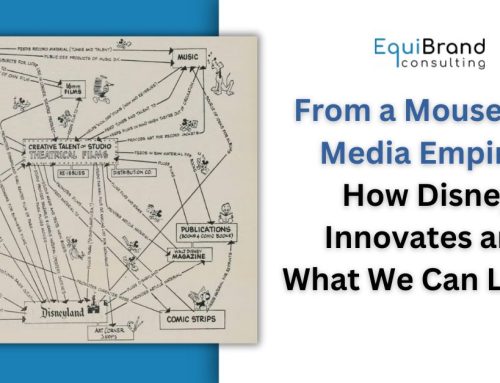Starbucks. Google. Southwest Airlines.
What do 3 of the world’s most famously successful companies share in common?
They all know their winning aspiration – whether called a mission, purpose or other guiding statement.
If you want to develop a strong company brand, you should know yours too.
What’s at stake here?
Our world today is totally overcrowded with businesses, each vying for attention from the almighty customer.
That means that standing out is no longer a luxury – it’s a necessity if you want to thrive.
Come explore how these top companies built a rock-solid brand reputation (and increased customer loyalty in the process).
A Strong Winning Aspiration Defines a Successful Brand
From humble beginnings in 1971 to more than 30,000 global locations today, Starbucks is a great example of a successful business built on a winning aspiration – along with deep insight into the coffee experience.
Just what is that experience? It’s that for coffee lovers, a cup of coffee is much more than a hot morning drink made from some roasted beans.
A cup of coffee – especially a Starbucks cup – is all about invigorating the senses: the smell, taste, sights, and sounds associated with a favorite beverage to start the day.
Sure, it’s coffee, but it’s also grabbing breakfast while checking email. It’s meeting with a family member, friend, or colleague throughout the day. It’s having a comfortable “third place” (outside of home and work) to socialize and get stuff done. If you’re a coffee lover like many of us, I know you can probably relate.
Starbucks delivers a carefully choreographed customer experience supported by its mission: “To inspire and nurture the human spirit— one person, one cup, and one neighborhood at a time.”
Google, Founded With a Clear Aspiration
Then there’s Google – perhaps best known as the ultimate source of knowledge for people across the globe. Google was also founded with a clear purpose in mind: “Organize the world’s information and make it universally accessible and usable.”
When the company was just a few years old, the founders developed a list of “Ten things we know to be true.” The list expounds upon the mission, with the powerful #1 priority to “Focus on the user and all else will follow.”
As former Google CEO and Alphabet Chairman Eric Schmidt noted, Google’s aspiration directly influences the way it operates: “Google was founded to get information to everybody. A by-product of that strategy is that we invented an advertising business which has provided great economics that allows us to build the servers, hire the employees, create value.”
Google shows us the power of being in alignment: from its company mission to customer value creation.
Southwest Airlines: A Revolutionary Insight & Idea
In the early 1970s, Southwest Airline’s founders Herb Kelleher and Rollin King drew on a napkin the insight and idea that would revolutionize the entire airline industry.
Other airlines targeted business customers and longer flights using a hub-and-spoke model. Not Southwest. They pursued another flyer segment through its point-to-point approach. It provided frequent, low-cost airline service in busy markets with shorter distances, with the first flights between Dallas, Houston, and San Antonio.
Southwest’s initial insight? Target the consumers who drive most of the time instead of flying, with frequent, no-frills service at the lowest possible cost.
What’s the Secret Behind Any Strong, Innovative Brand?
Southwest links customer insight with founder Herb Kelleher’s belief that if you put people first, the rest will follow. Kelleher said, “I tell my employees that we’re in the service business, and it’s incidental that we fly airplanes.” Southwest’s purpose is to “Connect people to what’s important in their lives through friendly, reliable, and low-cost air travel.” Southwest built a leading airline based on customer clarity, operational excellence, and a legendary corporate culture.
These companies are all well known for their strong brands and innovative products. What drives their performance, though, is an aspirational purpose and a commitment to customer-centricity.
It all begins with a simple “why”:
- Using internal clarity to define the organization’s aspiration
- Then, leveraging deep customer insight to chart new growth strategies
Want to learn more about growing your brand through the development of customer-centric marketing? We’re pleased to offer a free download of the third chapter of our book, Upstream Marketing. Access your download here.




















Follow EquiBrand